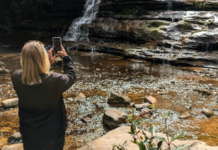Introduction
The Annapurna Circuit Trek is one of the most iconic and diverse treks in the world, offering breathtaking landscapes, rich cultural experiences, and a challenging yet rewarding adventure. Often referred to as the “Classic Himalayan Trek,” it takes you through lush subtropical forests, high-altitude deserts, traditional Nepalese villages, and across the formidable Thorong La Pass (5,416m).
Whether you’re an experienced trekker or a passionate adventurer, completing the Annapurna Circuit is a life-changing journey. This guide provides a detailed, unique, and practical approach to conquering this legendary trek.
Why the Annapurna Circuit Trek Stands Out
Unlike other treks in Nepal, the Annapurna Circuit offers an unmatched variety of scenery and culture. Here’s what makes it special:
- Diverse Landscapes – From rice paddies and rhododendron forests to arid cliffs resembling Tibet, the trek transitions through multiple climate zones.
- Cultural Richness – The trail passes through Gurung, Thakali, and Tibetan-influenced villages, each with unique traditions, cuisine, and hospitality.
- Thorong La Pass Challenge – Crossing this 5,416m-high pass is a major achievement and the trek’s most thrilling segment.
- Teahouse Trekking – Unlike remote expeditions, the Annapurna Circuit offers comfortable lodges (teahouses) with warm meals, making it accessible yet adventurous.
Best Time to Trek the Annapurna Circuit
Choosing the right season is crucial for a successful trek:
- Autumn (September – November) – The best time with clear skies, stable weather, and vibrant landscapes.
- Spring (March – May) – Pleasant temperatures and blooming rhododendrons, but occasional rain.
- Winter (December – February) – Extremely cold, especially at high altitudes, with possible snow blocking Thorong La.
- Monsoon (June – August) – Heavy rains, landslides, and leeches make trekking difficult.
Pro Tip: Avoid peak seasons (October & April) if you prefer fewer crowds.
Annapurna Circuit Trek Itinerary (Classic Route – 14 to 18 Days)
While shorter variations exist due to road construction, the traditional Annapurna Circuit trek takes 14-18 days. Here’s a well-balanced itinerary:
Day 1: Drive from Kathmandu to Besisahar (760m) & Trek to Bhulbhule (840m)
- Scenic drive through Nepal’s countryside.
- Begin trekking with an easy walk along the Marsyangdi River.
Day 2: Bhulbhule to Jagat (1,300m)
- Enter the Annapurna Conservation Area.
- Pass waterfalls and suspension bridges.
Day 3: Jagat to Dharapani (1,860m)
- Trail narrows with steep climbs.
- First views of Manaslu and Annapurna ranges.
Day 4: Dharapani to Chame (2,710m)
- Enter the Manang district, with alpine forests and rocky cliffs.
- Chame is the district headquarters with hot springs.
Day 5: Chame to Upper Pisang (3,300m)
- Stunning views of Annapurna II and IV.
- Upper Pisang offers a Tibetan-style village with a monastery.
Day 6: Upper Pisang to Manang (3,540m)
- Two route options:
- Lower Route (Ngawal) – Easier but less scenic.
- Upper Route (Ghyaru) – Steeper but with panoramic Himalayan views.
Day 7: Acclimatization in Manang
- Essential rest day to prevent altitude sickness.
- Side trips to Gangapurna Lake or Ice Lake (4,600m).
Day 8: Manang to Yak Kharka (4,000m)
- Gradual ascent into a high-altitude desert landscape.
- Spot blue sheep and yaks.
Day 9: Yak Kharka to Thorong Phedi (4,450m)
- Short but steep climb to the base of Thorong La.
- Sleep early for the big pass crossing the next day.
Day 10: Thorong Phedi to Muktinath (3,800m) via Thorong La Pass (5,416m)
- The toughest but most rewarding day!
- Start before dawn to avoid strong winds.
- Descend to Muktinath, a sacred pilgrimage site.
Day 11: Muktinath to Marpha (2,670m)
- Enter the Mustang region, known for apple orchards and Tibetan culture.
- Taste local apple brandy and cider.
Day 12: Marpha to Ghasa (2,010m)
- Descend into the Kali Gandaki Valley, the world’s deepest gorge.
Day 13: Ghasa to Tatopani (1,190m)
- Relax in natural hot springs after long trekking days.
Day 14: Tatopani to Ghorepani (2,860m)
- Steep climb through rhododendron forests.
Day 15: Ghorepani to Poon Hill (3,210m) & Trek to Nayapul → Drive to Pokhara
- Sunrise at Poon Hill for a 360° Himalayan panorama.
- End trek and drive to Pokhara for celebration!
Alternative Routes & Shortened Itineraries
Due to road construction, some trekkers opt for:
- Jeep Access to Chame or Manang – Reduces trekking days but skips lower-elevation beauty.
- Tilicho Lake Detour – Adds 2-3 days but includes one of Nepal’s highest lakes.
- Jomsom to Pokhara Flight – Cuts time but misses the Kali Gandaki Valley descent.
Essential Tips for Completing the Annapurna Circuit
- Physical Preparation – Train with cardio, leg strength, and hiking with a loaded backpack.
- Altitude Acclimatization – Never rush; follow the “climb high, sleep low” rule.
- Packing Smart – Layers (thermal, fleece, down jacket), trekking poles, sturdy boots, and a -10°C sleeping bag.
- Hydration & Diet – Drink 3-4L of water daily and eat carb-rich meals (dal bhat, noodles, porridge).
- Permits Required – ACAP Permit & TIMS Card (obtain in Kathmandu or Besisahar).
- Cash & Connectivity – Carry enough Nepali rupees (limited ATMs after Chame).
Conclusion: Is the Annapurna Circuit Trek Right for You?
Completing the Annapurna Circuit Trek is more than just a physical challenge—it’s a cultural immersion, a test of endurance, and a journey through some of Earth’s most dramatic landscapes. While road development has altered parts of the trail, the core experience—crossing Thorong La, exploring Manang, and descending into Mustang—remains unmatched.
If you seek adventure, cultural depth, and Himalayan grandeur, the Annapurna Circuit should be on your bucket list. With proper preparation, pacing, and respect for the mountains, this trek will leave you with memories (and bragging rights) for a lifetime.
Ready to take on the challenge? Start planning, pack your bags, and embark on the adventure of a lifetime!


















